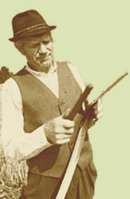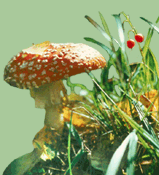How I transformed the Nature
Tarmo Timm makes an honest confession about his attempts to diversify Estonian nature with new exotic species. Alien species is a hot topic on international nature conservation agendas. The author, researcher of invertebrates, gives an exciting overview of species introduced into aquatic environments of Estonia, focusing mostly on invertebrates. He looks back into the history of hydrobiology during the Soviet time and describes the attempts of scientists to introduce different aquatic species to Estonian lakes. Most of these attempts failed, fortunately, as the author now states.
Estonian Nature enquires
Ants Talioja writes about the results of geobiological research on the Kurevere karst field.
Hans Trass reflects on the activities and need for the 50-year old Nature Conservation Commission.
Aspen tree a cursed tree
Mall Hiiemäe finishes the series of articles on aspen tree with an overview of reasons why people tend to create a negative image of the tree. The trembling leaves have fed the fantasy of folklore, and given reasons for the bad image. However, aspen tree was well known in folk medicine, and the trembling leaves were then not seen as a bad sign.
Lentils have many names
Urmas Kokassaar reminds us of a long-time foodstuff that has been on Estonian diet for centuries. However, the lentils have an unearned fame of being the foodstuff of poor people. The author encourages us to re-evaluate our diet and include this protein-rich legume back on our plates again.
Visiting a Goshawk
Sven Zaèek ends the year of the Goshawk with pictures and a short story of a hatching bird.
Clay house in Estonia?
Margus Palolill takes a fresh look at clay as construction material and gives advice on building a decent house. In Estonia, the history of building clay houses is located in South-Estonia, on the territory of Devonian sandstones, where limestone is lacking. The author outlines the positive effects of clay as construction material, gives good tips and draws attention to potential shortcomings as well.
Essay: Culture and the city: local ecotrap and global life belt? By Marek Sammul
Salajõe landscape protection area
Roland Müür takes the reader to an unnoticed karst area in West-Estonia, near Haapsalu. The River Salajõgi (Secret River) flows underground for 1.5 km. This exciting karst area will soon be opened and organized for visitors.
European rarities in Estonia: Avocet
Jaanus Elts introduces an endangered species the Avocet. This distinctive-looking bird has a curved beak and thin legs. It is endangered because its habitat coastal meadows are disappearing. In Estonia, the Avocet can only be seen at the Western coastal areas.
How faithful is our House Martin to its nesting place?
Jaanus Aua has spent years looking for answers to this question. He now sums up the results and compares these to the results gained in Central Europe. It appears that House Martins are true to their nesting grounds, especially male ones.
Interview: The hostess of three V-s
Toomas Jüriado has interviewed Gea Järvela, the director of the Vapramäe-Vellavere-Vitipalu Foundation
Practical tips: How to identify small meteorite craters?
Reet Tiirmaa shares her experience and skills in identifying trenches caused by cosmic substance fallen from the sky. In Estonia, 14 small meteorite craters have been identified. The author outlines the main features characterizing these craters and gives hope that there might be some more craters in Estonia to be found and identified.
Peninsula above the sea
Kaido Einama takes a fresh look ate the Kloogaranna area and the Pakri peninsula. He passes by several interesting villages and ends up in the even more interesting former Soviet military town of Paldiski. Different military objects form an integral part of this sightseeing tour.
| 

![[IN ENGLISH]](images/gb.gif)





